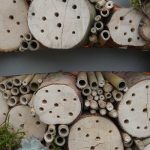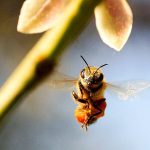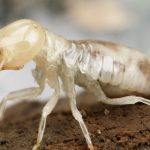Carpenter ants can cause significant damage to your house by tunneling through wood and compromising its structural integrity. These pests excavate galleries and create nests inside wooden structures, leading to weakened and potentially unsafe areas.
Additionally, their presence indicates an underlying moisture issue, as carpenter ants are attracted to damp conditions, which can further worsen the damage to your home. Regular inspection and prompt action are crucial to preventing severe destruction and costly repairs caused by carpenter ants.
Taking steps to eliminate moisture sources, seal entry points, and employ professional pest control services can help safeguard your property from these destructive insects.

Credit: www.psu.edu
Understanding Carpenter Ant Behavior
Carpenter ants can cause significant damage to your house by tunneling through wood and compromising its structural integrity. Understanding their behavior is crucial in identifying and eradicating these destructive pests efficiently.
Carpenter ants can cause significant damage to your house if their presence goes unnoticed or untreated. Understanding the behavior of these ants is crucial in order to effectively manage and eliminate infestations. In this section, we will delve into the life cycle and habits of carpenter ants, explore how they establish colonies, and discuss the role of worker ants within their colonies.
Life Cycle And Habits Of Carpenter Ants:
- Carpenter ants go through a four-stage life cycle consisting of egg, larvae, pupae, and adult.
- The eggs are laid by the queen and are small and white in color. They hatch into larvae within a few weeks.
- Larvae are the growing stage of the ant and are usually white and legless. They are cared for by worker ants who provide them with food.
- After the larval stage, the ant enters the pupal stage, during which it undergoes metamorphosis and transforms into an adult ant.
- The adult ants are the mature stage and are responsible for colony expansion and maintenance.
- Carpenter ants are mostly active during the night and tend to forage for food in a wide area around their nests.
- They are attracted to sweet and sugary foods and can be found in areas such as kitchens and pantry.
- Carpenter ants are adept at finding sources of moisture, making them attracted to damp or humid areas in your house.
- They do not consume wood but excavate galleries in it to create their nests, causing structural damage over time.
How Carpenter Ants Establish Colonies:
- Carpenter ants establish their colonies in various locations, including decaying wood, tree stumps, and even the wooden structures of your house.
- When a queen ant is ready to establish a new colony, she leaves her parent colony and seeks out a suitable nesting site.
- The queen then excavates a small tunnel into the wood and creates a small chamber to lay her eggs.
- She tends to the eggs and nurtures the growing larvae until they pupate and become adult ants.
- Once the first generation of workers emerges, they take over the responsibility of expanding and maintaining the colony.
The Role Of Worker Ants In The Colony:
- Worker ants are the backbone of the carpenter ant colony, performing various tasks to ensure its survival and growth.
- They are responsible for foraging, gathering food, and bringing it back to the nest to feed the entire colony.
- Workers also clean, maintain, and expand the nest, excavating more galleries in the wood to accommodate the growing population.
- They have strong jaws and can cause significant damage to timber, compromising the structural integrity of your house.
- Some worker ants are designated as soldiers and have larger mandibles, enabling them to defend the colony against threats.
- Worker ants possess a remarkable ability to communicate through chemical signals, using pheromones to relay messages and coordinate their activities.
Understanding the behavior of carpenter ants is essential for effective control and prevention measures. By comprehending their life cycle, nesting habits, and the role of worker ants in the colony, you will be better equipped to tackle a carpenter ant infestation and protect your house from potential damage.
Stay vigilant and take action promptly to minimize the impact of these destructive pests.
Signs Of Carpenter Ant Infestation
Carpenter ants can cause significant damage to your house, as they tunnel through wood structures, compromising their integrity. Look for signs like wood shavings, rustling sounds, or discarded wings to identify a possible infestation and take action promptly to protect your home.
Identifying The Presence Of Carpenter Ants In Your Home
- Visible ants: Spotting carpenter ants in your home is the most obvious sign of an infestation. Look for large black or reddish-brown ants with a segmented body and elbowed antennae.
- Frass or sawdust piles: Carpenter ants create tunnels within the wood, and as they dig through it, they push out frass or sawdust, which accumulates beneath infested areas.
- Rustling or tapping sounds: You may hear faint rustling or tapping sounds coming from within the walls if the infestation is severe.
- Winged swarmers: During the mating season, carpenter ants release winged males and females, called swarmers, to establish new colonies. Spotting these winged ants indoors could indicate an infestation in your home.
- Trailing ants: Carpenter ants leave behind pheromone trails to communicate with each other. If you notice a line of ants moving in a trail, it’s likely an indication of an established nest nearby.
Recognizing The Damage Caused By Carpenter Ants
- Structural damage: Unlike termites, carpenter ants do not eat wood but excavate it to create tunnels for their nests. Over time, this can weaken the structure of your home, causing sagging floors, doors that don’t close properly, or bulging walls.
- Wood debris: As carpenter ants dig through the wood, they discard debris, which often includes wood shavings, tiny fragments, and dead ant parts. Spotting such debris near infested areas is a clear sign of carpenter ant activity.
- Bubbling or peeling paint: Moisture from carpenter ant activity can cause the paint on wooden surfaces to bubble or peel. This is usually a result of the ants excavating galleries and creating openings for moisture to seep in.
- Hollow-sounding wood: When tapping on wooden surfaces affected by carpenter ants, you may notice a hollow sound. This indicates that the ants have tunneled inside and removed the wood, leaving empty spaces.
Differentiating Between Carpenter Ant And Termite Damage
- Appearance of damage: Carpenter ant damage often consists of clean, smooth tunnels that appear sandpapered, while termite damage creates mud tubes and uneven galleries.
- Frass characteristics: Carpenter ants push out frass, which is typically coarse and resembles sawdust, while termites produce mud-like frass or droppings.
- Location of damage: Carpenter ants primarily tunnel through moist or decayed wood, while termites can damage both moist and dry wood.
- Antennae appearance: Carpenter ants have elbowed antennae, while termites possess straight antennae.
- Size of insects: Carpenter ants tend to be larger than termites, with workers measuring around ¼ to ½ inch, whereas termites are usually smaller.
Identifying signs of a carpenter ant infestation and understanding the damage they can cause is crucial for promptly addressing the issue to protect your home’s structural integrity. Keep an eye out for visible ants, frass piles, winged swarmers, and trailing ants.
Carpenter ant damage includes structural issues, wood debris, bubbling paint, and hollow-sounding wood. Differentiate carpenter ant damage from termite damage based on appearance, frass characteristics, location, antennae appearance, and insect size. Stay vigilant to prevent further damage.
The Destructive Effects Of Carpenter Ants
Carpenter ants can wreak havoc on your home by tunneling through wood structures, causing damage and weakening the overall integrity of your house. These destructive insects can compromise the safety and value of your property if left untreated.
Carpenter ants may seem harmless, with their small size and gentle demeanor. However, underestimate them at your own peril. These little critters can wreak havoc on your house if left unchecked. In this section, we’ll delve into the destructive effects of carpenter ants, including how they damage wooden structures, the resulting structural problems, and the financial implications of untreated infestations.
Let’s explore each aspect below.
How Carpenter Ants Damage Wooden Structures
Carpenter ants possess strong mandibles capable of tearing through wood. These insects do not consume wood for nourishment like termites; instead, they excavate it to build their elaborate nests. Here’s how they go about damaging wooden structures:
- Boring: Carpenter ants tunnel through wood, creating extensive networks of galleries and passageways. These tunnels weaken the structural integrity of the wood, compromising its ability to support weight and withstand stress.
- Frass: As they excavate tunnels, carpenter ants push out sawdust-like material called frass. This frass may appear as small piles or accumulations near infested wooden areas, serving as a telltale sign of their presence.
- Damage over time: Although carpenter ants don’t devour wood like termites, their continuous tunneling and nest expansion can cause extensive damage over time. Ignoring an infestation can lead to costly repairs and structural instability.
Structural Problems Caused By Carpenter Ant Infestations
The damage inflicted by carpenter ants can have severe consequences for the structural stability of your home. Below are the key problems that can arise:
- Wood weakening: As carpenter ants hollow out wooden structures, the affected areas become weakened and less able to bear weight. This can lead to floors sagging, walls bowing, and roofs losing their integrity.
- Compromised support: The tunnels created by carpenter ants may weaken critical load-bearing elements, such as beams and joists. Over time, this can result in major structural issues that affect the overall stability of your house.
- Safety hazards: In extreme cases, the weakening of wooden structures caused by carpenter ant infestations can lead to collapses or dangerous conditions, posing a risk to your safety and that of your loved ones.
The Financial Implications Of Untreated Carpenter Ant Infestations
Ignoring a carpenter ant infestation can have significant financial ramifications. Here are the potential financial implications of not dealing with these pests promptly:
- Costly repairs: If left unchecked, carpenter ant damage can necessitate extensive repairs to restore the structural integrity of your home. The longer the infestation persists, the more damage they can cause, leading to higher repair costs.
- Decreased property value: Structural problems resulting from untreated carpenter ant infestations can diminish the value of your property. When it comes time to sell, potential buyers may be deterred by the knowledge of past or existing infestations.
- Insurance coverage limitations: Some insurance policies may not cover repairs related to pest damage, leaving you to foot the bill entirely. It’s essential to check your policy and address any infestations promptly to avoid financial strain.
In summation, carpenter ants can wreak havoc on wooden structures, leading to structural problems and financial implications if left unchecked. Understanding the destructive effects of these pests emphasizes the importance of early detection and proactive measures to eliminate them from your home.
Preventing Carpenter Ant Infestations
Protect your house from carpenter ant infestations with effective prevention methods. These pests can cause significant damage by hollowing out wood structures, making early intervention crucial. Keep your home safe by addressing moisture issues, sealing entry points, and removing potential sources of food.
Effective Strategies For Carpenter Ant Prevention:
Plain Paragraph:
Preventing carpenter ant infestations in your house requires a comprehensive approach. By implementing effective strategies and taking proactive steps, you can significantly reduce the risk of these destructive pests causing extensive damage. Explore the following preventive measures to keep your home ant-free.
Bullet Points:
- Eliminating attractants and favorable conditions: By removing what draws carpenter ants to your house, you can discourage them from establishing colonies.
- Keep food sealed tightly in airtight containers and clean up any spills promptly.
- Avoid leaving pet food exposed overnight.
- Seal gaps, cracks, and entry points that may serve as entryways for ants.
- Trim tree branches and vegetation away from your house, as they can act as bridges for the ants.
- Ensure proper drainage to eliminate excess moisture that attracts carpenter ants.
- Home maintenance tips to minimize the risk of infestation: Regular upkeep of your property reduces the potential vulnerabilities that carpenter ants exploit when seeking shelter.
- Store firewood away from your home and inspect it thoroughly before bringing it indoors.
- Repair any water leaks or moisture issues promptly to prevent ants from being attracted to damp areas.
- Clean up debris and clutter in and around your home, as these can provide nesting sites for carpenter ants.
- Monitor and maintain the structural integrity of your house, fixing damaged wood and replacing weather-stripping as needed.
- Install door sweeps and repair damaged window screens to block potential entry points for carpenter ants.
By following these effective strategies and implementing home maintenance measures, you can significantly reduce the risk of carpenter ant infestations. Stay vigilant and take action promptly to protect your home from these destructive pests.
Treating Carpenter Ant Infestations
Carpenter ants can cause extensive damage to your house by tunneling through wood to build their nests. Prompt treatment is crucial to prevent structural problems and costly repairs. Seek professional help to effectively eliminate these infestations and safeguard your home.
Recognizing When Professional Help Is Necessary:
- If the carpenter ant infestation in your house is extensive or persistent, it may be time to seek professional help. Here are some signs that indicate you need professional intervention:
- Large numbers of carpenter ants appearing regularly
- Frequent sightings of winged ants or swarmers
- Damage to structural wood, such as hollowed out pathways
- Audible sounds coming from the woodwork
- Difficulty in locating the nest or determining the extent of the infestation
Diy Methods For Carpenter Ant Control:
- Before seeking professional help, you can try some do-it-yourself (diy) methods to control carpenter ant infestations. Here are some effective techniques to try at home:
- Locate and eliminate entry points: Seal cracks, gaps, and crevices in your home’s exterior to prevent ants from entering.
- Remove food sources: Clean up spills, food crumbs, and pet food to eliminate attractive food sources for carpenter ants.
- Trim trees and shrubs: Remove vegetation that might provide bridges for ants to access your home.
- Use bait stations: Place bait traps near ant trails to lure and eliminate ants. Choose non-repellent bait for long-term control.
- Apply insecticides: Treat infested areas with insecticide sprays or dusts labeled for carpenter ant control. Follow the instructions carefully for safety and effectiveness.
- Regularly inspect and monitor: Continually inspect your home for signs of carpenter ant activity, and monitor treated areas for any resurgence.
- Keep your home dry: Carpenter ants are attracted to damp or moist areas, so fixing water leaks and improving ventilation can help deter them.
Remember, diy methods might not be sufficient for larger infestations or if the nest is located within the structure. In such cases, professional assistance is recommended.
The Importance Of Addressing The Root Cause Of Infestations:
- Treating the visible signs of carpenter ant infestations is crucial, but it is equally important to address the root cause to prevent future infestations. Here’s why it matters:
- Prevent further structural damage: Identifying and addressing the conditions that attracted carpenter ants in the first place can help prevent ongoing damage to your home’s wooden structures.
- Avoid recurring infestations: By eliminating the factors that attracted ants, you can reduce the likelihood of another infestation in the future.
- Protect your property value: Controlling carpenter ant infestations and addressing the underlying causes helps maintain the integrity and value of your home.
- Minimize health risks: Carpenter ants do not pose significant health risks directly, but when they nest inside your home, they can compromise the structural stability and create a conducive environment for other pests or mold growth.
- Peace of mind: Taking proactive steps to address the root cause of the infestation gives you peace of mind, knowing that you have taken necessary measures to prevent future problems.
Remember, if you are unsure about the severity of the infestation or need help identifying the root cause, it is always advisable to consult with a professional pest control expert.
Frequently Asked Questions For What Do Carpenter Ants Do To Your House
How Do Carpenter Ants Damage A House?
Carpenter ants damage a house by burrowing into the wood to build their nests. They carve out tunnels and galleries, weakening the structure. If left untreated, they can cause significant damage over time.
Can Carpenter Ants Cause Structural Damage?
Yes, carpenter ants can cause structural damage to your house. As they create galleries and tunnels in wood, they weaken the structure, compromising its integrity. If a carpenter ant infestation is not addressed promptly, it can lead to costly repairs.
How Can You Tell If You Have Carpenter Ants In Your House?
Signs of carpenter ants in your house include sawdust-like debris (frass), rustling noises in the walls, winged ants, and damaged or hollow-sounding wood. If you notice these signs, it’s essential to identify and address the infestation promptly to prevent further damage.
Are Carpenter Ants Dangerous To Humans?
While carpenter ants don’t typically pose a direct threat to humans, they can still be a nuisance. Their bites can cause minor irritation, and their presence may indicate an underlying moisture issue or structural damage in your home.
How Do You Get Rid Of Carpenter Ants Naturally?
To get rid of carpenter ants naturally, start by identifying and eliminating moisture problems in your home. Remove food sources, seal entry points, and use non-toxic repellents like diatomaceous earth or essential oils. However, for severe infestations, it’s best to consult a professional pest control service.
Conclusion
Carpenter ants can cause significant damage to your house if left untreated. These pests are not only a nuisance but can also compromise the structural integrity of your home. The signs of a carpenter ant infestation include piles of debris, rustling sounds in the walls, and sawdust-like frass.
It is crucial to address the issue promptly by contacting a professional pest control service. By doing so, you can prevent further destruction and protect the value of your property. Implementing preventive measures like sealing cracks and eliminating sources of moisture can also help deter carpenter ants from invading your home.
Remember, early detection and swift action are key to keeping your house safe from the destructive effects of carpenter ants. Stay vigilant and take the necessary steps to safeguard your home against these damaging insects.

“My name is Leo Jacob, and I hold a Bachelor of Science degree with Honors in Applied Environmental Science and Sustainability from the University of the West of Scotland. Since childhood, I’ve been passionate about living an eco-friendly life. After completing my studies, I dedicated myself to finding simple ways to lead a more environmentally conscious lifestyle. I launched ecolifely.com to share my educational background and practical experiences with everyone, hoping to inspire others to join me in creating a greener, more sustainable world.”













Leave a Reply